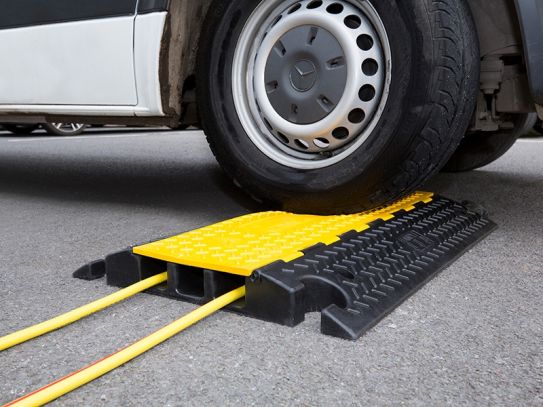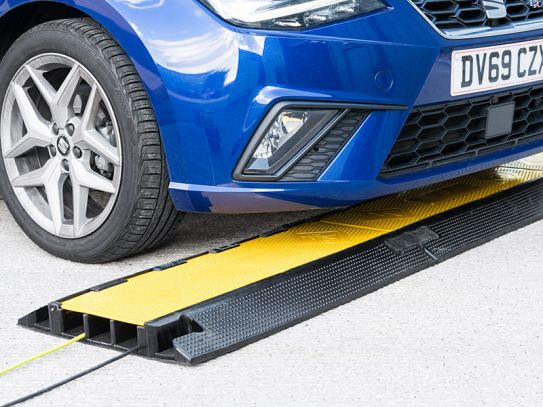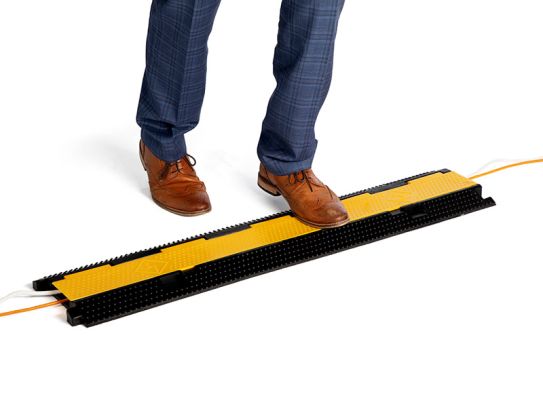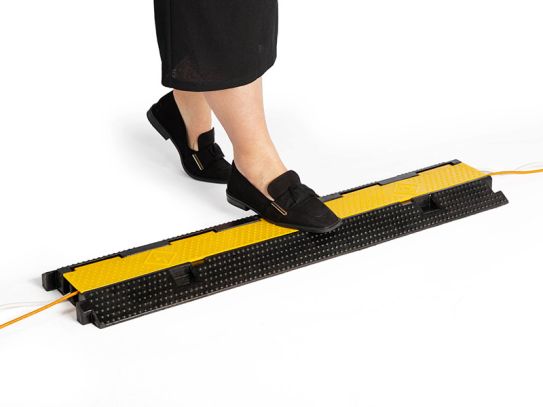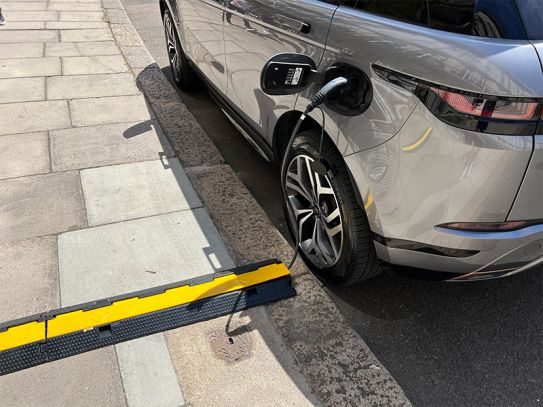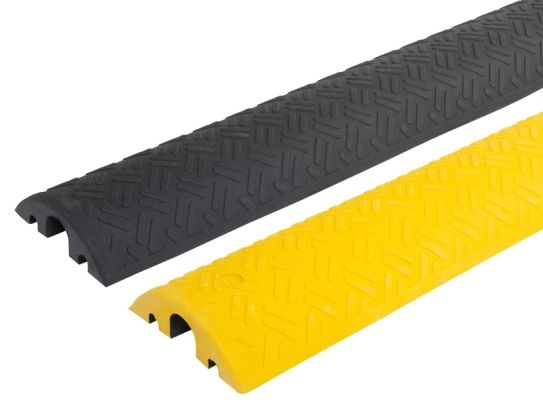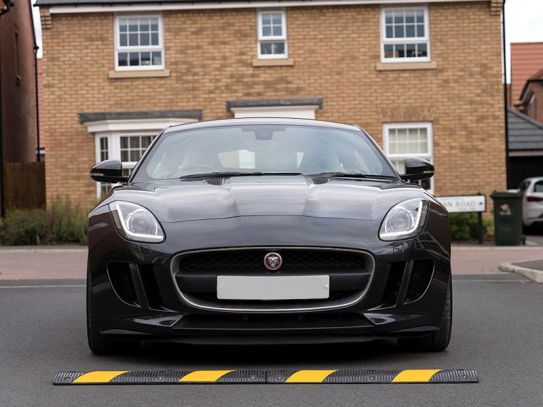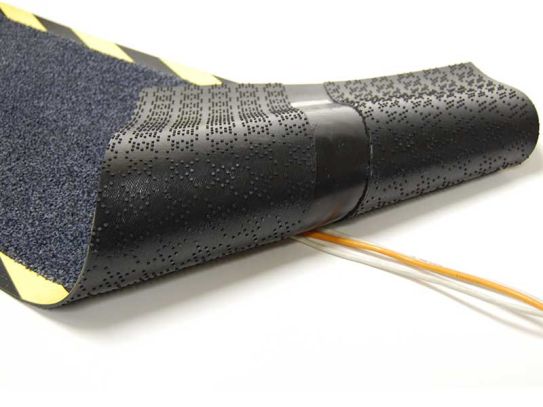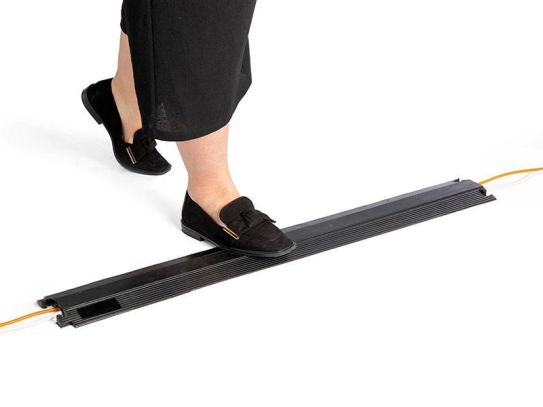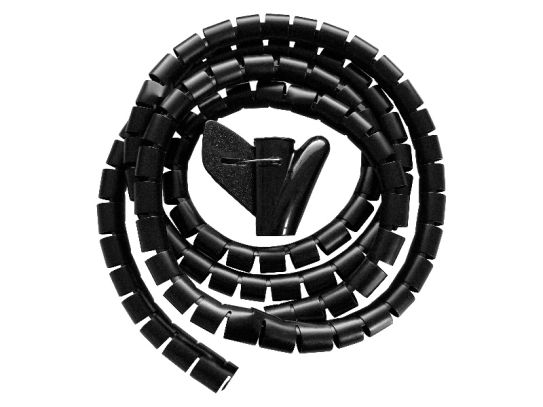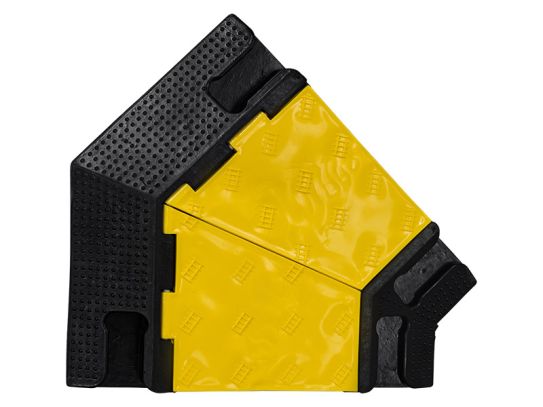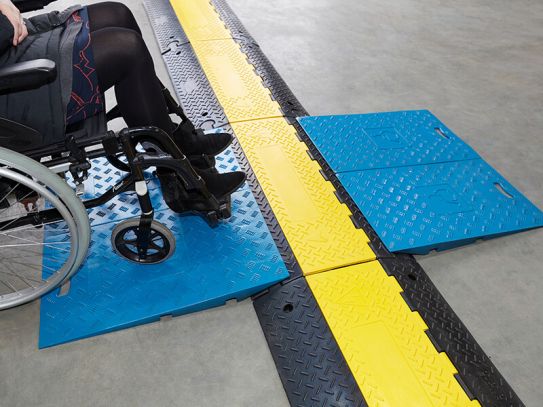Cable Protectors
Protect Your Cables with Our Durable Cable Protectors
Our cable protectors are the perfect solution for keeping your cables safe and secure. Made of high-quality materials and designed to withstand heavy foot and vehicle traffic, they provide a protective barrier around your cables, preventing damage and wear. With a versatile and flexible design, our cable protectors are compatible with a variety of cables and are easy to install, making them perfect for any situation. Plus, they're easy to clean and maintain, so you can keep them looking like new for years to come. Don't let damaged cables slow you down - protect your cables with our cable protectors and keep your operations running smoothly.
What Is a Cable Protector?
A cable protector is a device that is used to protect cables and cords from damage. This can be accomplished in a number of ways, such as by covering the cables with a protective material or by routing the cables through a protective channel. Cable protectors are commonly used in environments where cables are subject to heavy use or are at risk of being damaged, such as in factories, warehouses, or other industrial settings. They can also be used in residential or commercial settings to prevent damage to cables and cords.
How Do Cable Protectors Work?
Cable protectors work by providing a protective covering or channel for cables and cords. This can help to prevent the cables from being damaged by heavy traffic, such as vehicles or machinery, or by other sources of wear and tear. Cable protectors can be made from a variety of materials, such as rubber, plastic, or metal, and are designed to be durable and long-lasting.
What Are Some Common Uses for Cable Protectors?
Cable protectors are commonly used in environments where cables and cords are at risk of being damaged. This includes industrial settings, such as factories and warehouses, where cables may be subject to heavy traffic or other sources of wear and tear. Cable protectors are also often used in outdoor environments, such as construction sites, to protect cables and cords from the elements and other potential sources of damage. In addition, cable protectors are sometimes used in residential and commercial settings to prevent damage to cables and cords, such as in homes and offices.
Are There Different Types of Cable Protectors Available?
Yes, there are different types of cable protectors available, and they can differ in a number of ways. Some of the key factors that may differentiate one type of cable protector from another include the materials used to make the cable protector, the size and shape of the cable protector, and the type of cables or cords that the cable protector is designed to protect. Some cable protectors are designed to protect a single cable or cord, while others are designed to protect multiple cables or cords at once. Additionally, some cable protectors are designed to be used in specific types of environments, such as indoor or outdoor settings, while others are more versatile and can be used in a wider range of settings.
What Are Some Potential Hazards That Cable Protectors Are Designed to Protect Against?
Cable protectors are designed to protect against a number of potential hazards that can damage cables and cords. Some of the most common hazards that cable protectors can protect against include heavy traffic, such as vehicles or machinery, as well as exposure to water, dirt, and other elements. Cable protectors can also help to prevent cables and cords from being damaged by animals, such as rodents, or by other sources of wear and tear. Overall, cable protectors are generally effective at protecting against these hazards, provided that they are used properly and are in good working condition.
What Are the Key Factors to Consider When Choosing the Right Cable Protector?
There are several key factors to consider when choosing the right cable protector for a specific application or environment. Some of the most important factors to consider include the type of cables or cords that need to be protected, the type of environment in which the cable protector will be used, and the amount of traffic or other potential hazards that the cable protector will be exposed to. Other factors to consider may include the size and shape of the cable protector, the materials used to make the cable protector, and the overall durability and longevity of the cable protector. Additionally, it is important to consider the specific needs and requirements of the application or environment when choosing a cable protector, as well as any relevant regulations or standards that may apply.
What Materials Are Cable Protectors Typically Made Of?
Cable protectors are typically made of materials that are durable and able to withstand the rigours of their intended use. Some of the most common materials used to make cable protectors include rubber, plastic. These materials are often chosen for their durability, resistance to wear and tear, and ability to protect against a variety of potential hazards. Additionally, these materials are often selected for their ability to withstand exposure to the elements, such as water and dirt, as well as their resistance to damage from heavy traffic or other sources of wear and tear. Overall, the specific materials used to make a cable protector will depend on the intended use and environment for the cable protector.
Why Are Rubber Cable Protectors a Good Choice?
Rubber cable protectors are a good choice for several reasons. First, rubber is a durable and flexible material that is able to withstand a wide range of environmental conditions and potential hazards. It is also resistant to wear and tear, making it a good choice for use in environments where cables and cords are at risk of being damaged. Additionally, rubber is a non-conductive material, which means that it will not interfere with the electrical signals carried by the cables that it is protecting. This makes rubber cable protectors a good choice for protecting sensitive electrical equipment. Rubber cable protectors are also generally easy to install and use, making them a convenient and effective solution for protecting cables and cords.
What Cable Protector Should I Use Outdoors?
When choosing a cable protector for outdoor use, it is important to select a cable protector that is specifically designed for outdoor use. This will ensure that the cable protector is able to withstand exposure to the elements, such as water, dirt, and other potential sources of damage. Additionally, it is important to choose a cable protector that is made of durable materials, such as rubber or plastic, that are able to withstand the rigours of outdoor use. In terms of specific types of cable protectors, there are several options to consider for outdoor use. Some options include rubber cable protectors, which are durable and flexible, as well as plastic or metal cable protectors, which are also able to withstand the elements. It is also important to choose a cable protector that is the appropriate size and shape for the cables and cords that need to be protected, as well as any potential hazards that the cable protector may be exposed to in the outdoor environment.
How Are Cable Protectors Typically Installed?
Cable protectors are typically installed by placing the cable protector over the cables or cords that need to be protected. This can be done by hand, or with the use of tools such as pliers or a cable cutter. In some cases, cable protectors may be attached to the ground or other surface using adhesives, screws, or other fasteners. The specific installation process will vary depending on the type of cable protector being used and the environment in which it is being installed. In general, however, the installation of cable protectors is a relatively simple process that does not require specialised tools or equipment.
What Are Some Common Challenges Associated with Using Cable Protectors?
One common challenge associated with using cable protectors is ensuring that the cable protector is the appropriate size and shape for the cables or cords that need to be protected. If the cable protector is too small, it may not provide adequate protection for the cables. On the other hand, if the cable protector is too large, it may be difficult to install or may not fit properly. To overcome this challenge, it is important to carefully measure the cables or cords that need to be protected and choose a cable protector that is the appropriate size and shape. Additionally, it is important to choose a cable protector that is made of durable materials that are able to withstand the rigours of use in the intended environment. Other challenges or problems that may arise when using cable protectors include damage to the cable protector itself, such as from heavy traffic or other sources of wear and tear. To avoid or overcome these challenges, it is important to regularly inspect and maintain the cable protector, and to replace it if it becomes damaged or worn.
Are There Any Safety Precautions That Should Be Taken When Using Cable Protectors?
There are several safety precautions that should be taken when using cable protectors. First, it is important to ensure that the cable protector is installed properly and securely, so that it does not pose a tripping hazard or become dislodged. It is also important to regularly inspect and maintain the cable protector, and to replace it if it becomes damaged or worn. Additionally, it is important to choose a cable protector that is made of non-conductive materials, such as rubber, to prevent the cable protector from interfering with the electrical signals carried by the cables that it is protecting. Overall, it is important to use cable protectors in a safe and responsible manner, and to follow any relevant safety guidelines or regulations when using them.
What Are the Maintenance and Care Requirements for Cable Protectors?
The maintenance and care requirements for cable protectors will vary depending on the specific type of cable protector and the environment in which it is used. In general, however, cable protectors should be regularly inspected to ensure that they are in good working condition, and any damage or wear should be repaired or replaced as necessary. Cable protectors should also be kept clean and free of debris, and any fluids or other substances that may damage the cable protector should be promptly removed. Additionally, it is important to store cable protectors in a dry, protected location when they are not in use, to prevent damage from the elements or other potential hazards. Overall, proper care and maintenance can help to ensure that cable protectors remain in good working condition and are able to provide effective protection for cables and cords over time.
Are There Any UK or European Industry Standards or Regulations That Apply to Cable Protectors?
Yes, there are several industry standards and regulations that apply to cable protectors in the UK and Europe. In the UK, the British Standard BS 7671 (also known as the "IET Wiring Regulations") sets out the requirements for the design, installation, and maintenance of electrical systems, including the use of cable protectors. This standard applies to all electrical installations in the UK, and provides guidance on the safe and effective use of cable protectors to protect electrical cables and cords.
In Europe, the European Committee for Electrotechnical Standardisation (CENELEC) is responsible for developing and coordinating the adoption of technical standards for electrical and electronic products and systems. The CENELEC standards apply to a wide range of electrical products and systems, including cable protectors, and provide guidance on the design, testing, and use of these products. Additionally, the European Union (EU) has adopted a number of directives and regulations that apply to electrical and electronic products, including cable protectors, to ensure their safety and conformity with EU standards. These regulations are enforced by national regulatory bodies in each EU member state.
